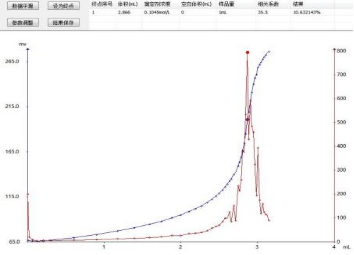July 02, 2025
Tag:
I. Preface
Chlorides act as anode activators in the electroplating solution of electronic components. Therefore, the detection of chloride ions is an important test for electroplating solutions of electronic components
Measure indicators. This method uses silver nitrate as the titrant and takes advantage of the reaction principle that chloride ions and silver ions react to form silver nitrate, with silver ions being used for selection
The electrode was used as the measuring electrode, and the chloride ion content was detected by the JH-T6 fully automatic potentiometric titrator. The detection results were highly accurate and the detection efficiency was fast.
It is convenient to operate, reduces human interference at the same time, and enhances the stability of the detection.
Ii. Instruments and Reagents
2.1 Instruments
JH-T6 fully automatic potentiometric titrator, silver ion selective electrode, analytical balance, etc
2.2. Reagents
Nitric acid (analytical grade), silver nitrate standard solution (0.1mol/L), purified water.
Iii. Experimental Methods
3.1 Analysis Steps
Accurately measure 1.0mL of the sample to be tested with a 1mL pipette into a titration cup, add 50mL of water, place it on the titration stand, and start the pre-set
The method is to titrate with the calibrated silver nitrate solution until the potential suddenly crosses the endpoint, and record the amount used. At the same time, conduct blank experiments.
The parameters of the titrator are set as shown in Table 1
Table 1 Titration Parameter Settings
| Titration type: | Dynamic titration | method name: | Chloride content determination |
| Burette volume: |
10mL |
Sample measurement unit: |
g |
| Working electrode: | Composite silver electrode | Reference electrode |
無(wú) |
| Stirring speed: |
8 |
Pre-stirring time |
5s |
| Display unit: |
mV |
End volume: |
20mL |
| Electrode equilibrium time: |
4s |
electrode equilibrium potential: |
1mv |
| Titration speed: | standard titration | Equilibrium potential |
6mv |
| Pre-titration addition volume: |
0 |
Minimum addition volume: |
0.02mL |
| Potential spike: |
500 |
pre-controlled mv value: |
無(wú) |
| Correlation coefficient: |
35.5 |
Result unit: |
g/L |
|
Titrant name: |
Silver nitrate solution | Theoretical concentration: | 0.1(calibrated concentration) |
3. Test graph example

Iv. Results and Discussion
4.1 Experimental Results
The experimental results are shown in Table 2
Table 2 Test Results
| Sample name |
Sampling volume mL |
c(AgNO3) mol/L |
Blank volume V0 /mL |
Titration volume V1 /mL |
Chloride g/L |
Average content g/L |
|
溶液 |
1 |
0.1027 |
0.02 |
2.796 |
10.121 |
10.442 |
|
2.866 |
10.376 |
|||||
|
2.990 |
10.828 |
4.2. Conclusion
The determination of chloride ions by potentiometric titration is rapid and has good data repeatability. It reduces the interference of indicator color on the results and improves the detection
Efficiency.
References
[1] Wan Zhuo. Detection Methods for Nickel Ions, Chloride Ions and Boric acid Content in Electroplating Nickel Solution [J]. Industrial Technological Innovation.


Contact Us
Tel: (+86) 400 610 1188
WhatsApp/Telegram/Wechat: +86 13621645194
+86 15021993094


